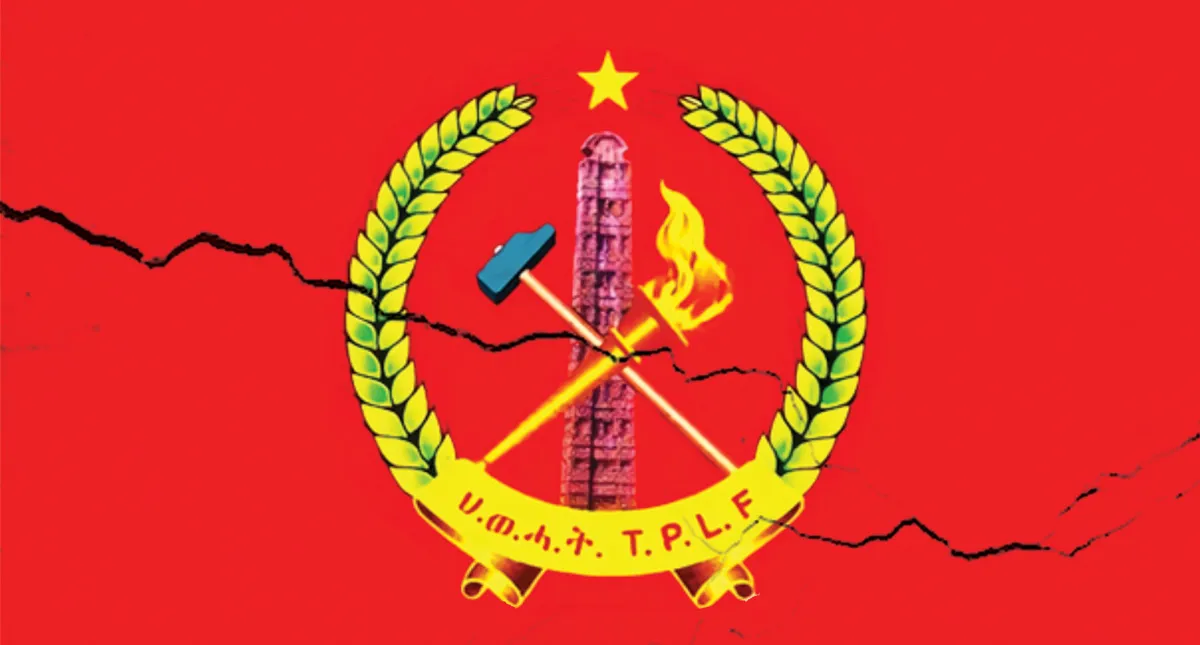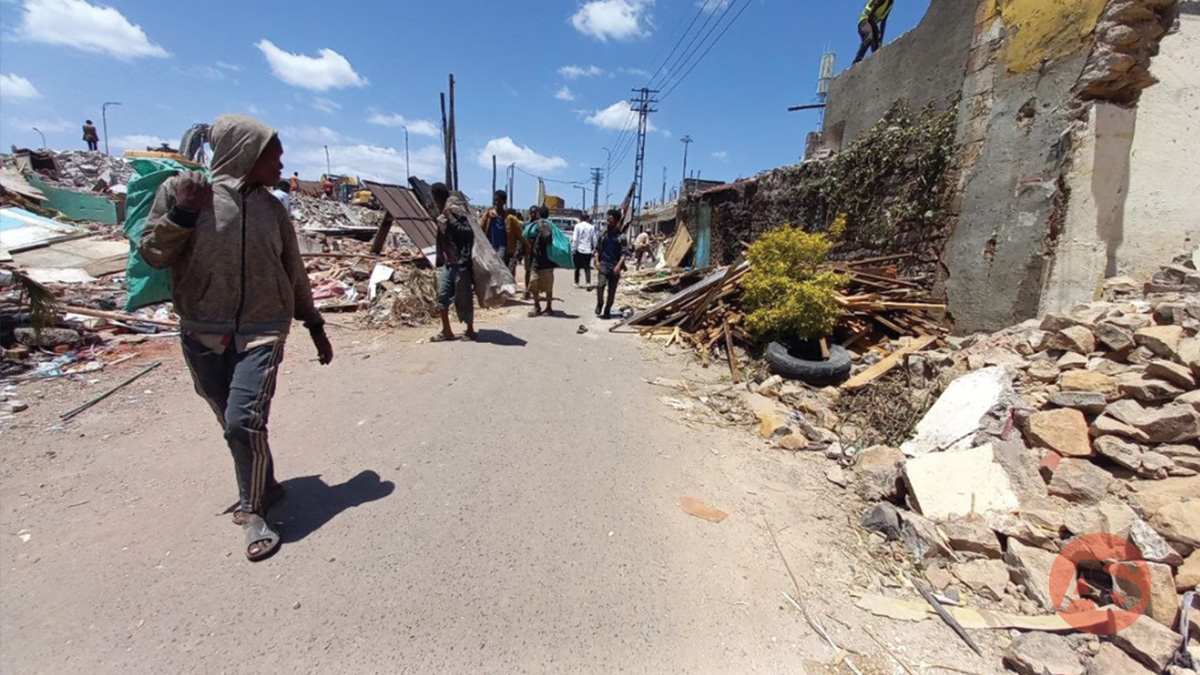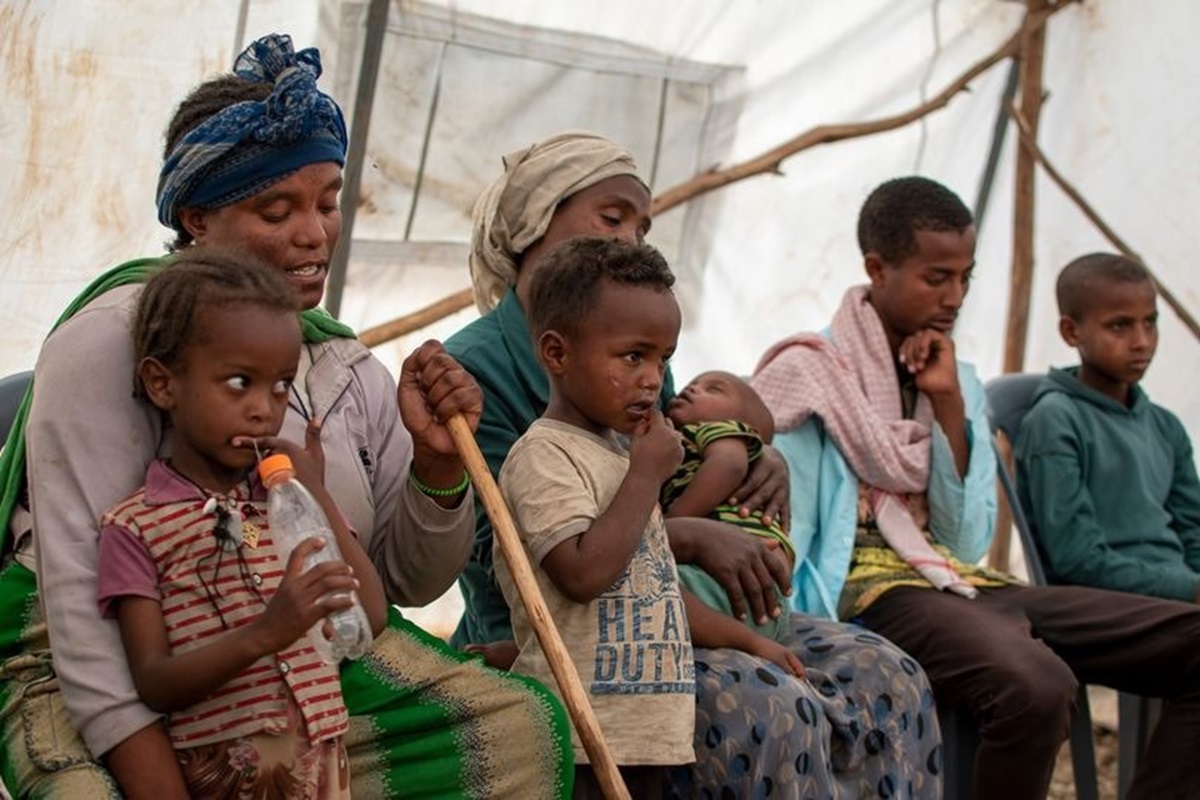Analysis: Press freedom in Ethiopia: From vice to hot property

Real Press Freedom in Ethiopia depends on liberating the commercial shackles on a stunted media system
Elshadai Negash , For Addis Standard
A year of sweeping reforms in Ethiopia’s political and media landscape culminated early this month with Prime Minister Abiy Ahmed receiving the Felix Houphouet-Boigny Prize for Peace on the sidelines of the World Press Freedom Day 2019 celebrations in Ethiopia and the country widely acknowledged for the wide-sweeping reforms that sees almost no journalist in prison for the first time over twenty years. But as Elshadai Negash argues, the focus should now turn to liberating the commercial shackles that have stunted the growth of the media sector in the country.
Addis Abeba, May 31/2019 – The power corridors circling the Nelson Mandella Hall at the African Union Headquarters gave way to stringent security, strict protocol, and restrictive access control in early May as the who’s who in the global rights campaigning and advocacy evaded the bastion of Pan-African traditional power.
Selfies, groupies, and mock-ups took the place of highly-choreographed signature photos. Pop-up exhibits replaced structured powerpoint presentations. Where there were suits, ties, and formal African cultural dress, now stood folks with unusual hairdos, wacky T-shirts, and startup types who couldn’t be bothered about the appropriateness of the attire they had on.
Inside the meeting halls; activists, bloggers, and civil society types from countries with restricted media freedom lambasted their governments and elite for denying them freedom of speech, a basic human right which their countries signed up to honor in national constitutions and international conventions. They interrupted speeches by politicians to demand pressure on the government of their own countries and openly rebuffed claims by policymakers about perceived improvement in the media freedom.
For the first time in many years, much of ranting, finger-pointing, and name-calling did not focus on the Ethiopian government, whose turn it was to receive plaudits for a series of sweeping reforms that saw journalists previously jailed freed; those who fled the country fearing prosecution return; unblocking of over 260 websites; relaxing of regulations in media ownership; and a relaxing of conditions on social media use.
While PM Abiy received the UNESCO’s top prize for his government’s reforms at a side-event, sprinkled in panels throughout the three-day event were the heroes who sacrificed their lives, career paths, families, and general sense of security to uphold their rights to free speech. Showered with praise for their bravery and their continued work, in different capacities ranging from government, civil society, media, and the regulatory space; they mingled uneasily with traditional media owners, media/political representatives of foreign missions in Addis Abeba, consultants, and trainers during the breaks.
This uneasiness, a mixture of hope and fear in a rapidly-evolving media landscape, is generally driven by a massive onslaught of changes in the pipeline on the supply side of the media system. A team of legal bigwigs churning paperwork under the direction of the Attorney General’s office and a working group led by former journalist Solomon Goshu are close to completing the first draft of a new media law that has reformers excited. A coalition of thirty-five print media owners have just finalized the registration of the Ethiopia Media Council, an effort at self-regulation that has been ten years in the making but is now finally gathering some purpose after multiple stop-starts. The first-ever Editor’s Forum, a well-meaning initiative of five newspaper editors at setting ethical and industry standards for the profession, is also taking baby steps, while efforts at strengthening journalists’ unions and other new models of governance like social media councils are finally finding ears and leg-up donor funding with reduced stubborn resistance.
All these efforts at changing challenging laws and supporting media development are largely driven by a perspective that guards freedom of speech as a basic human right that needs to be protected and scaled through accountable public institutions, traditional media councils, and professional unions which, in a perfect world, would form something like a tripartite interest system to check, balance, and (sometimes) advance each other’s interests. It is a model that has served the interests of many advanced economies in the West and often prescribed by Western governments and media freedom advocates as a magic bullet for advancing freedom of expression in Ethiopia.
But once the euphoria of gathering like-minds around the world ends and the visiting troupes file away from their five-star accommodation in central Addis to the reality of their day-to-day jobs, the reality for many in their day-to-day jobs couldn’t be more different.
Ethiopia is Africa’s fastest growing economy and a potential market of 100million+ (or so we often get told because of the projections based on the 2007 census) consumers who all have to read a printed material, watch TV, listen to the radio, and do it all from the comforts of their mobile device as consumers of content on digital and social media at some or multiple points in their lives. In the powerpoints of consultants working for multinationals, advertising agencies, diplomatic missions, and investment roadshows, Ethiopia is the market to be in right now with a growth potential spanning years if not decades.
But the coffers of media owners and seasoned journalists who ply their trade scrambling between full-time positions in their media organizations and side-gigs to offset rising living costs tells a far different story. For years, the media industry in Ethiopia has a had a step-child relationship to the much-revered economic growth of the country. It is kept at home and sent to school to fulfill a parental obligation and a general duty to society, but not given the extra tutoring, private school education, fancy toys, and effort rewards of the biological children of the household like agriculture, textiles, construction, and mining who are spoiled with easy access to elites, tax holidays, and better market conditions. If it misbehaves, it is slapped with heavy punishment (fines), the threat of eviction, and potential time spent in jail.
For players who played by the unwritten rules of the game in print, it was all about surviving the ups and downs of an awkward advertising market to ensure sustained revenue and find a way of haggling with an unprofessional hardcopy distribution system to offset some of the rising printing costs slapped by the state-run Berhanena Selam Printing Enterprise and a few other magazine printers, who would never develop a symbiotic relationship with publishers because of their low volumes. The result of this is a series of owners in the print industry who have done an exemplary job at surviving tough market conditions, but not able to fulfill their growth potential compared to players of similar size in other emerging markets. While somewhat nurturing a culture of respectable journalism, they could do little to stop journalists leaving their organizations when foreign news agencies and international organizations looking for communications talent come to tap their talent. The offer of better starting salaries; the stability of a well-oiled corporate system tying employees to generous pensions, mortgages, and access to career development opportunities; and a media system constrained from expansion by various market forces made it difficult for players in print to aim at more than continued survival.
For players in the ever-expanding broadcast industry awash with state, commercial, ethnic-based, and religious players, surviving is an endless competition for talent, a dwindling advertising market, and rising costs for the production of original content. While ethnic and religious affiliated media can tap on their followers and donors to raise funds and cover costs and regional state media can rely on the largess of their regional governments to cover their budgets, commercial broadcasters do not enjoy such relative luxuries.
Instead, they have to fight tooth-and-nail for a dwindling advertising market and rising content costs. A recent regulation to totally ban the advertising of alcohol and tobacco on broadcast media (accounting for a reduction of 40% of advertising revenue by commercial broadcasters); a directive to restrict public service announcements only to state media; and no reliable payment infrastructure that would allow content producers to charge users for premium content further weakens aspirations of growth and comes on the backdrop of new players, some given leg-up funding by interest groups and patronage networks, entering an already-crowded market.
While traditional print and broadcast players grapple with these issues, a whole group of loosely-regulated content aggregators have flourished in the market. With very little original content costs and regulatory burdens, these actors repackage the original content from traditional players, influencers, citizen reporters, and other sources to drive traffic on social media and search engines. They are better compensated for their content brokering efforts through generous click-through advertising. They pay little or no tax from their income in Ethiopia; don’t retain their foreign-exchange income in the country’s banks; and are virtually overlooked in the spate of regulatory reforms currently underway in the country.
In a perfect world of capitalism, the market would be left alone to address these inefficiencies and imbalances. In the survival of the fittest, the strong fish would eat bigger fish through mergers and acquisitions. Bigger players scale their operations through the consolidation of shared services and assign bigger budgets to acquire talent, improve content production, and consequently improve reach and engagement. Big enough players will attract the attention of private equity and investment banks when their Average Revenue per User (ARPU) and other key matrices reach investment-worthy status. And the media companies, once the labor of love of individual media owners, will grow into larger corporations managing complex relationships with investors, government, Internet Service Providers (ISPs), and social media platforms paying journalists and content producers better wages tied to profits and shares in a growing enterprise. They will have little sweat dealing with banks and finance institutions who will be eager to cut the cheques for their expansion efforts. Journalists will be celebrities whose affairs are handled by publicists and agents, not easily swayed by the efforts of headhunters to prize-them away to other professional pursuits. They will no longer sweat visa officers at various embassies in Addis who will approve their visit requests for conferences, holidays, training, industry events, and awards with very little doubt that they are instead heading to the asylum camps of European and North American cities.
Media executives will be influence magnates throwing the biggest parties and drawing in the who’s who of society into their inner circle. They will dine with CEOs, politicians, and foreign dignitaries who will seek their influence and vast network of resources to advance their own agenda. They will be the darlings of investment conferences and high-power breakfasts with a fully-booked calendar of annual events to attend arranged around conference calls with investors, executive coaching sessions, media appearances, and of course relaxing gateways with their loved ones to rest, unwind, and refocus their energies for more growth and abundance.
This Nirvana-like fantasy also sees the sprouting of a creative industry of writers, film studios, advertisers, marketing agencies, agents, intellectual property lawyers, and executives in shared corporate services like finance, human capital, learning and development, facilities management, satellite and studio management where quality jobs would be created and sustained.
In a perfect world of ripple-effects, the upscaling of the media system should also be good for the state media apparatus which would attract more purposeful support from the state (could happen quickly if Ethiopia finds a way of tapping into oil and gas reserves) to retain talent and expand the government’s own influence agenda. The EBC of today could be the AlJazeera (Qatar) and CGTN (China) of 2030 expanding services in multiple languages, hiring correspondents in important geographies, showcasing Ethiopia’s soft-power across the globe, and with an Ethiopian face reporting live from far-flung faces like the twin towers in Kuala Lampur, Malaysia, a country projected to be in the world’s top 20 economies.
Like all forecast scenarios, the market may or may not be an enactment of this pure capitalist fantasy. But it is the good intention of the well and the wise operating in the current media system to move its current head and wheels towards the desired state of advancement and prosperity for all stakeholders.
At the top of the list of priorities should be a robust media policy that seeks to both regulate and deal with some of the market, content, and consumption bottlenecks that have hampered the growth of media in the country. Priorities of this policy should be incentivizing the creation of a professional content distribution network for print media; working with the investment and tax regimes of the government to reduce or eliminate import duties on paper, printing and production equipment, and accessories; and working with the finance and technology sector to facilitate payment platforms so that original producers can accept electronic payments for their content.
Rather than viewing the media system as a threat to government, the policy will acknowledge and grow the industry’s role as a means of gainful employment; an important source of tax revenue; a potential source of foreign exchange earnings; and a system that can, through sustainable enterprise, improve standards in the education, health, self-awareness, and wellbeing of society.
Alongside the media policy, provisions need to be made in the country’s investment policy to also address the stigma and citizenship restrictions against investing in the media sector. These include removing some of the restrictions of owning multiple media properties within the same company; removing the restrictions on foreign ownership; and allowing companies in similar sectors like finance, technology, advertising, and telecom to own full or partial stake in media companies so that they can use resources, expertise, and infrastructure to grow the market. It is the cross-fertilization of talent, ideas, systems, and networks that will grow the media industry, rather than a siloed view of approaching its issues and challenges working in a vacuum with media owners, journalists, regulators, and donors.
Like many things in a rapidly-evolving world, the media policy should go beyond the limitations and interests of current stakeholders and foresee the media landscape for where it is heading. In 2019, we are already living in a world where artificial intelligence is supporting broadcasters with subtitling their TV programs; news agencies are using bots to prepare short summaries of highly stratified corporate reports and sports news; and machine learning is supporting the work of program rating agencies by helping automate repetitive tasks and compiling reports for broadcasters, advertisers, and executives.
These trends will only accelerate in the coming years and have huge repercussions for a stunted media industry in Ethiopia and across the globe. It requires a whole new thinking on the continued upskilling of professionals on the application of these technologies; new business modes for monetizing content; and different types of skills for the journalist of tomorrow. It also begs for different models of self-regulation like Social Media Councils (SMCs) that could be more robust at safeguarding public interest than traditional press councils or communications authorities.
Markets, people, and economies hardly ever develop in a linear way and are subject to the machinations of limitations, interests, and several ups and downs. But the general end goal in five, ten, or twenty years should be to advance a media system that moves towards unrestrained growth; abundance of thinking, resources, and strong networks. It should move towards a situation where the press attains not just the regulatory and access to information freedom associated with positive liberty, but also unlimited economic and choice freedoms- the choice to pick the profession because it rewards professional respect, economic freedom, and access to traditional and emerging models of power. AS
______________________________________//_______________________________
Elshadai Negash is Ethiopia’s first-ever nominee of the CNN Multichoice African Journalist of the Year awards and currently working as a corporate affairs and strategic communications consultant based in Addis Abeba, Ethiopia.







